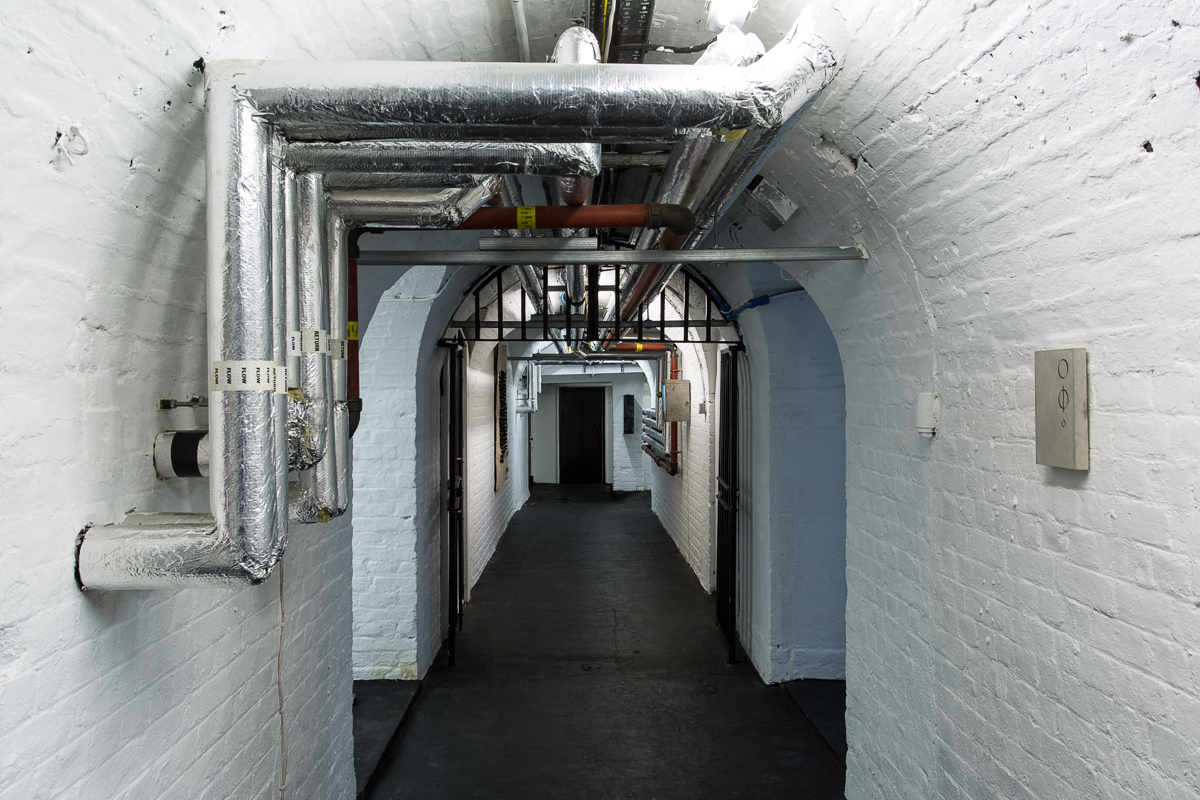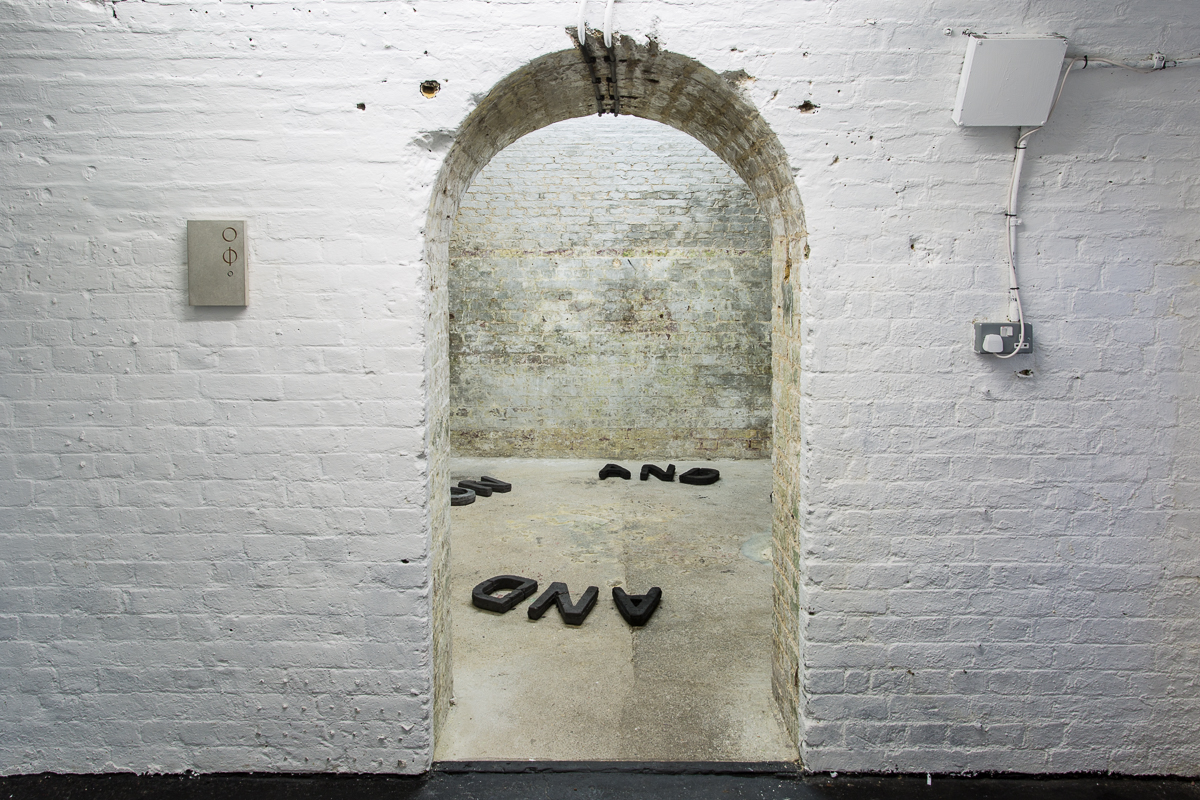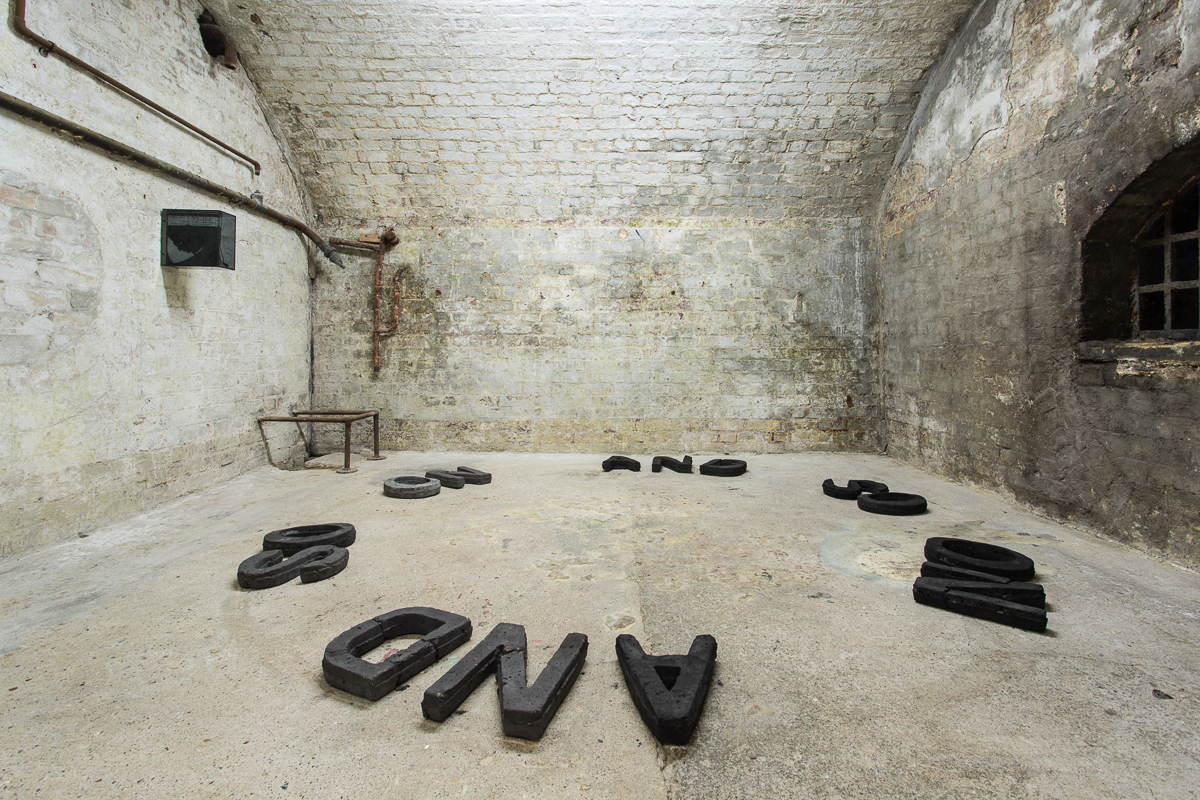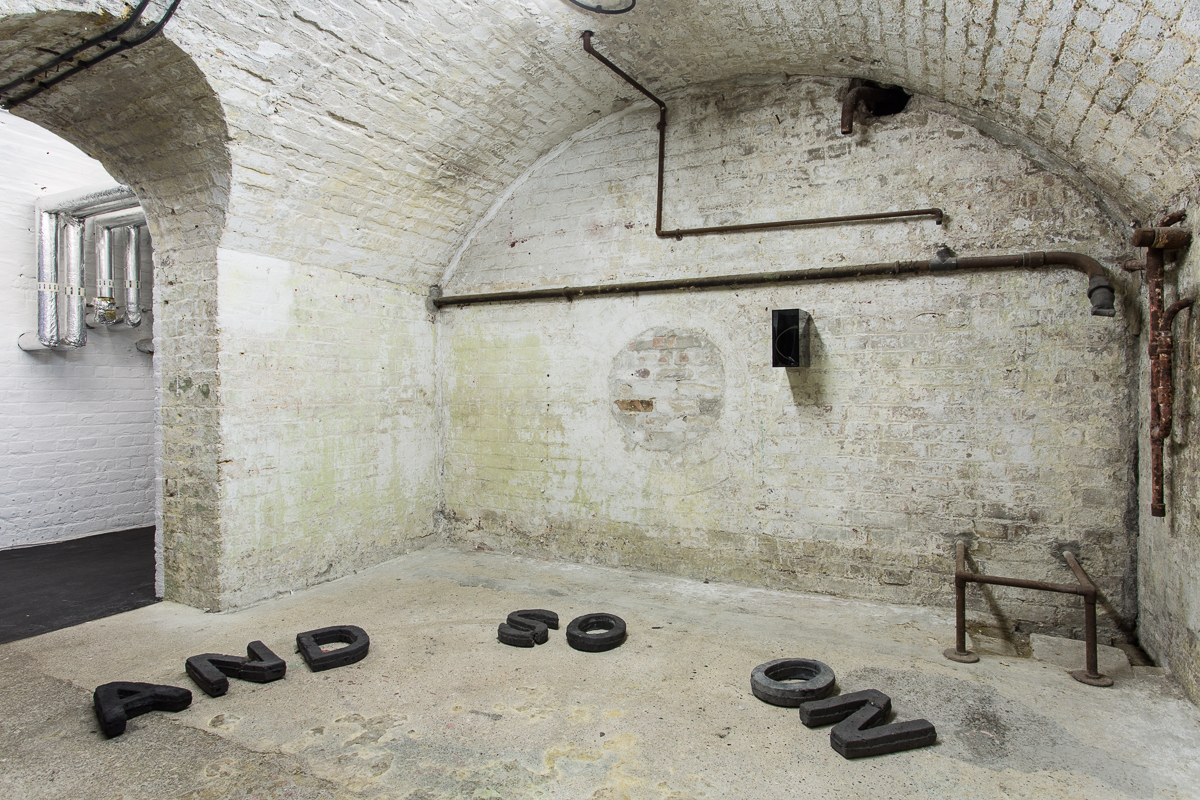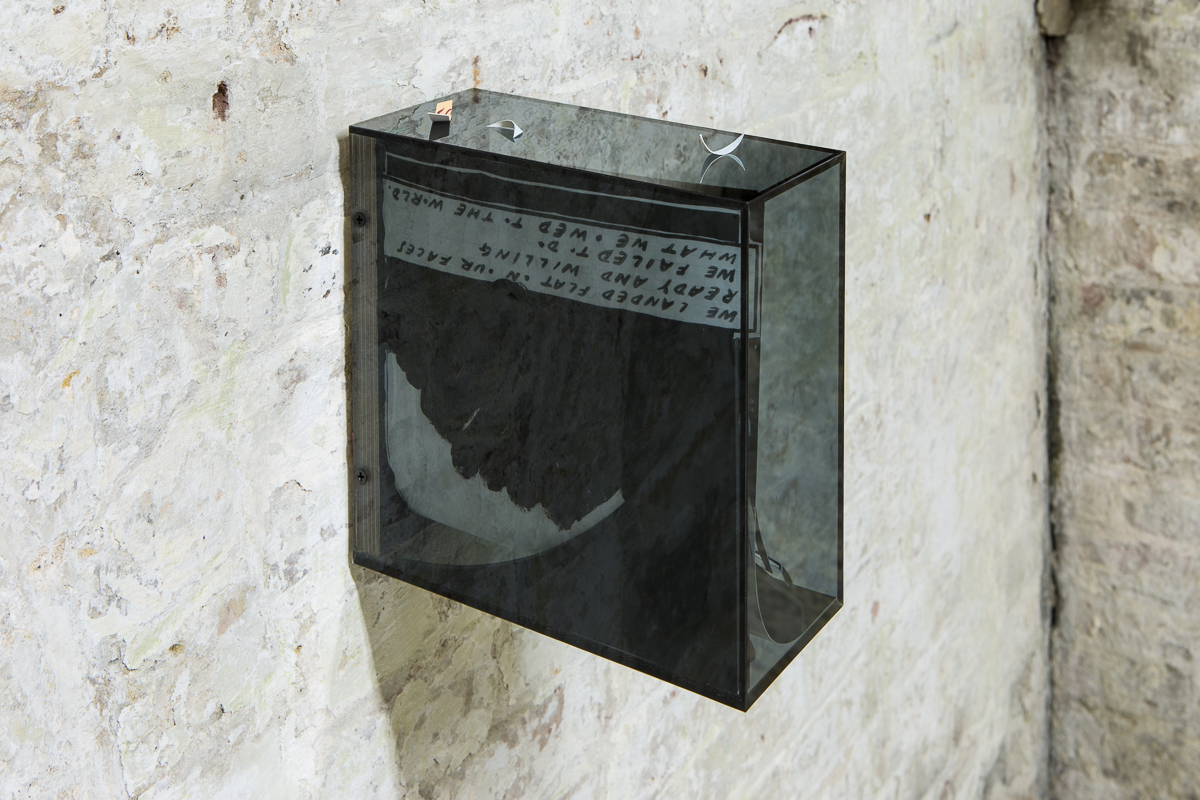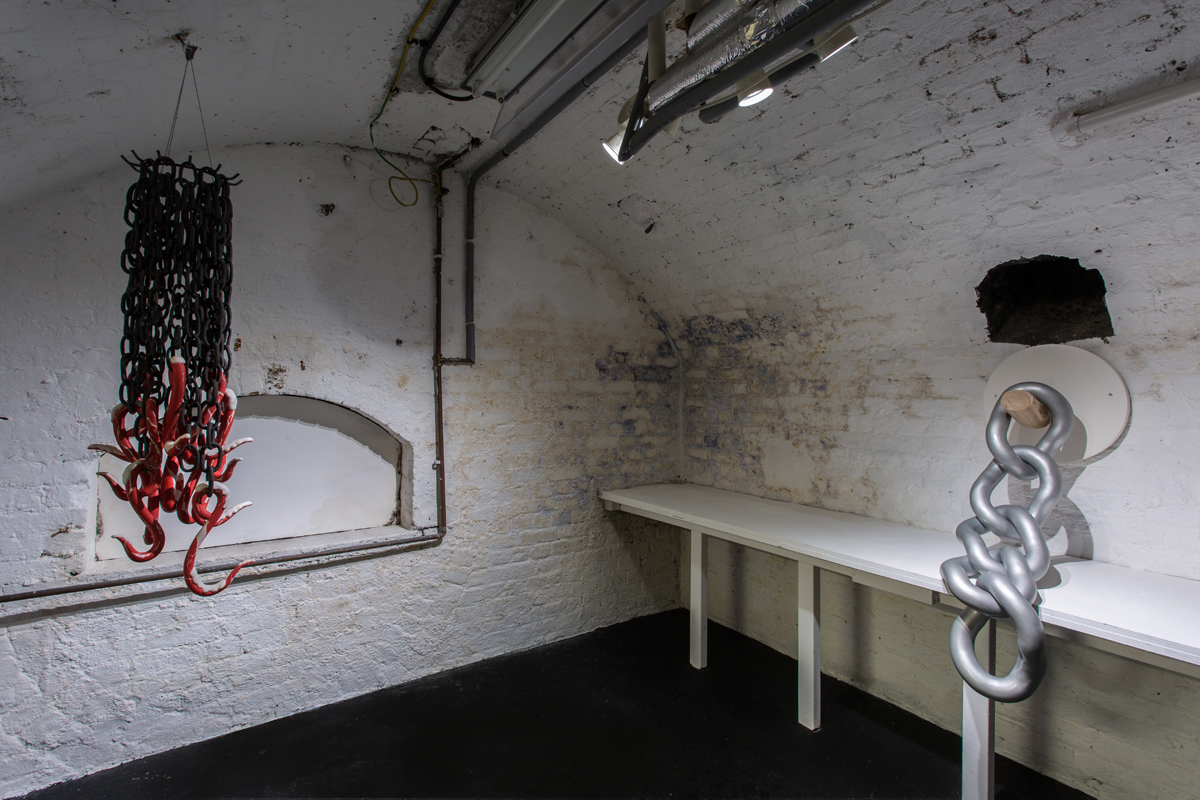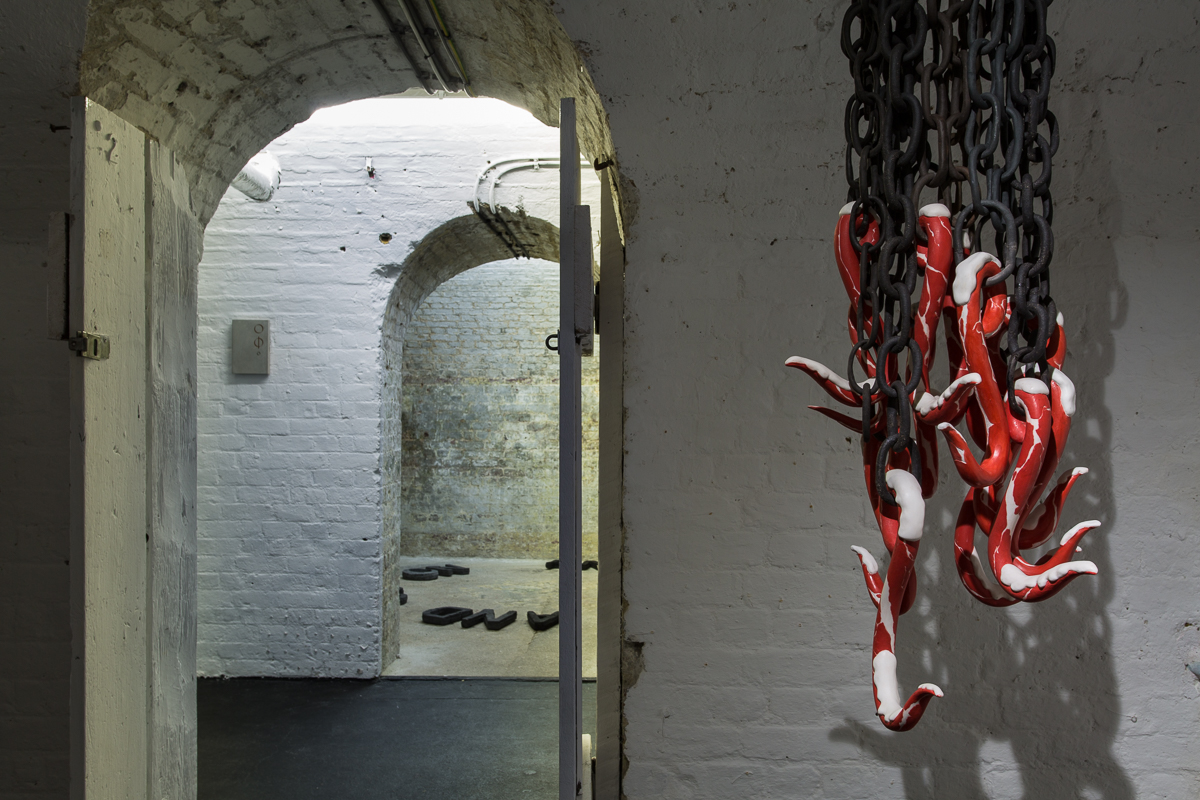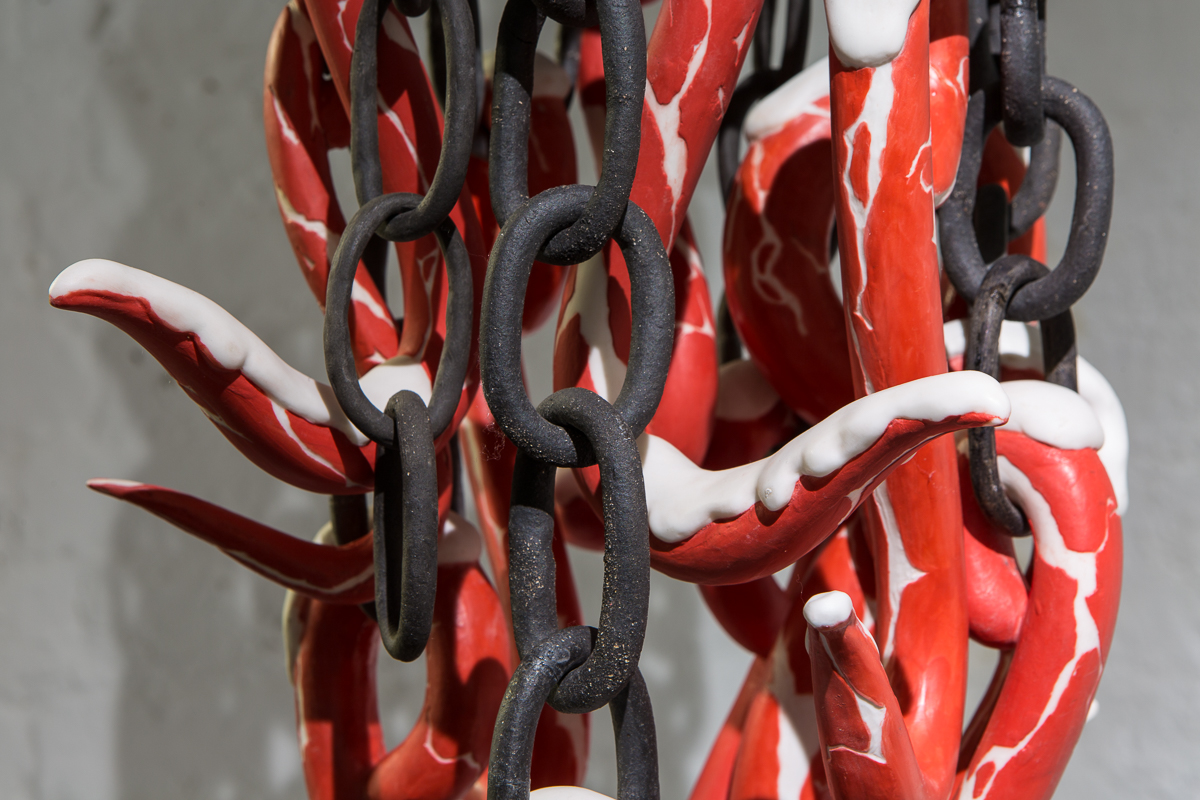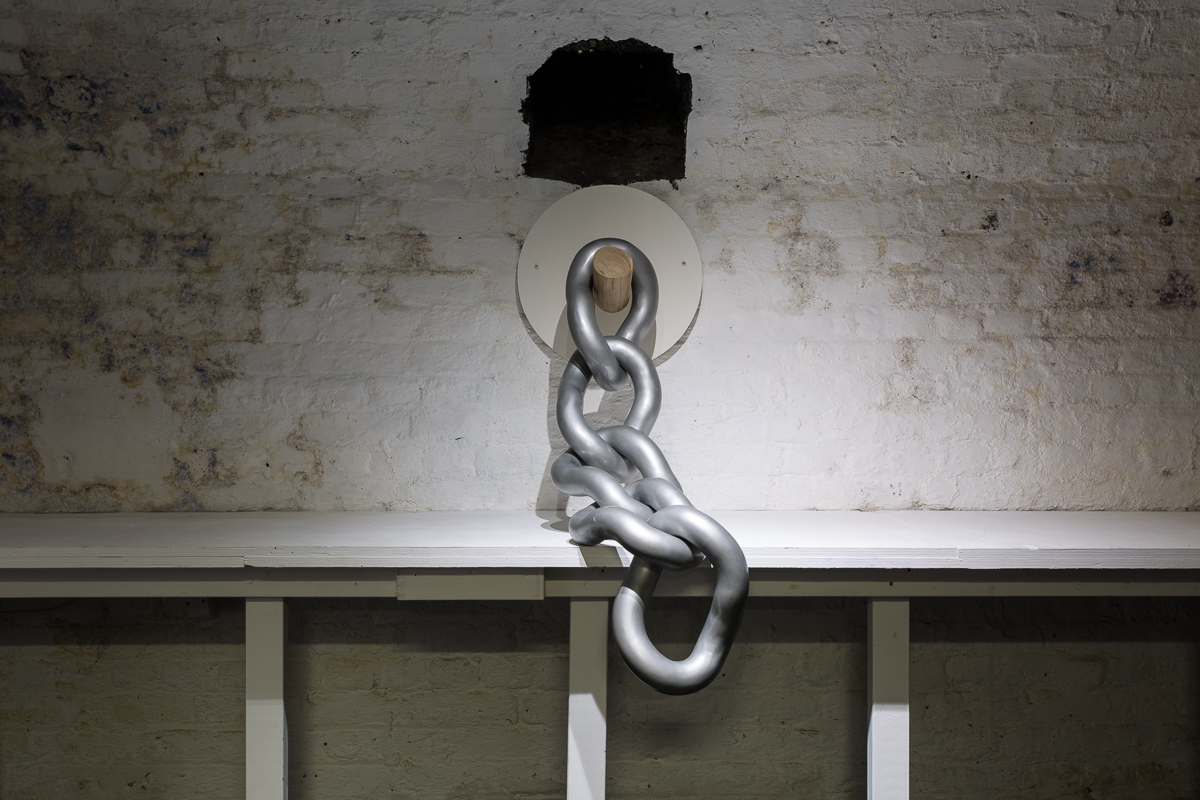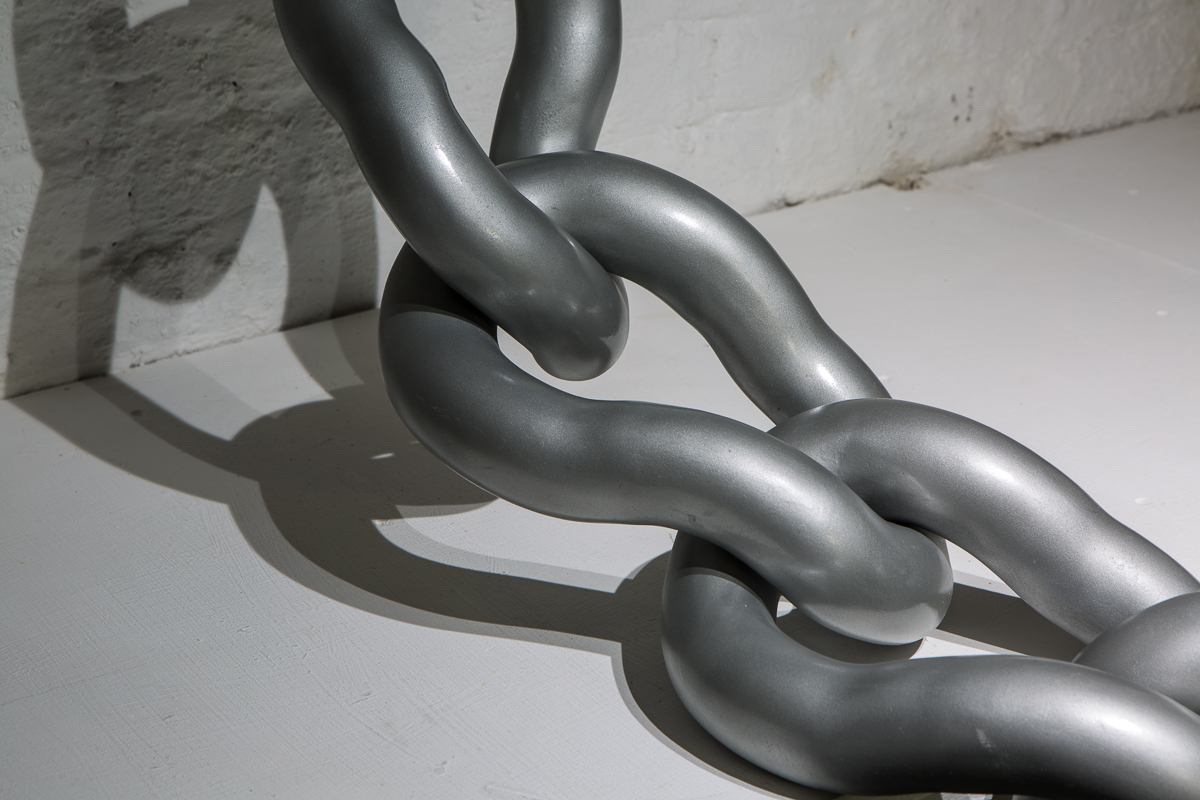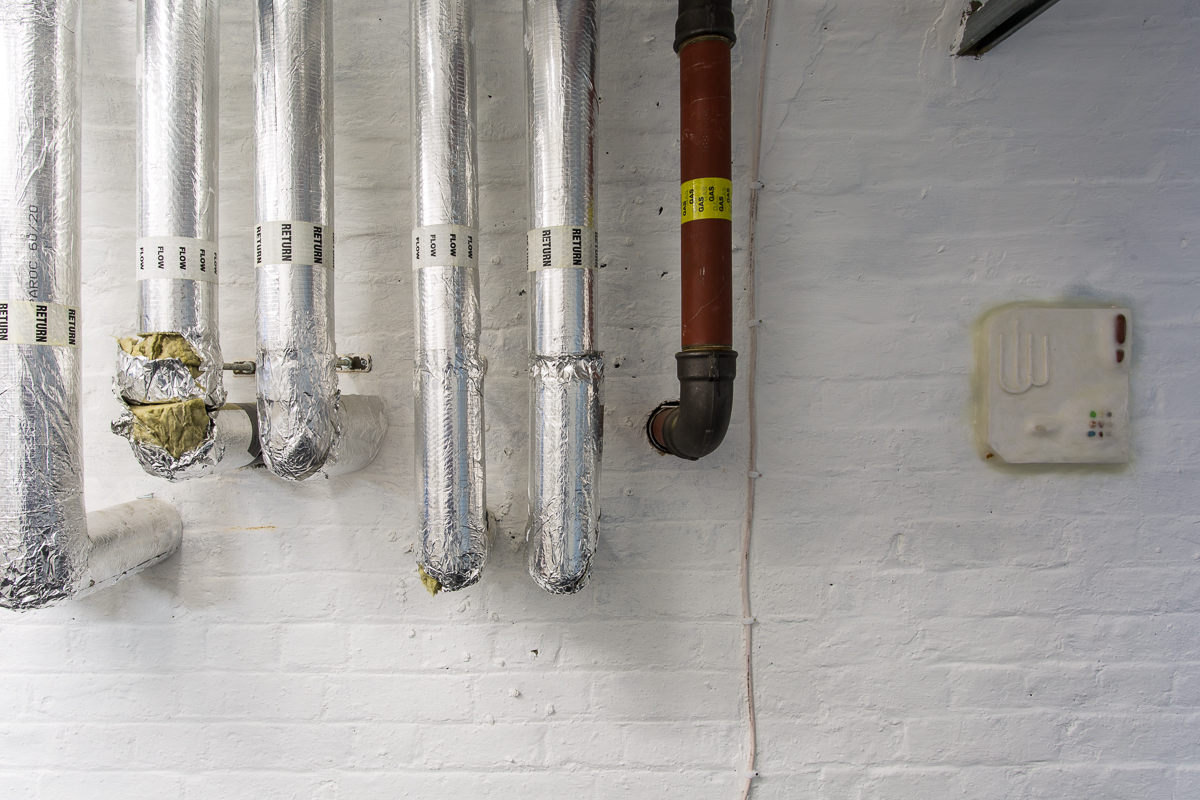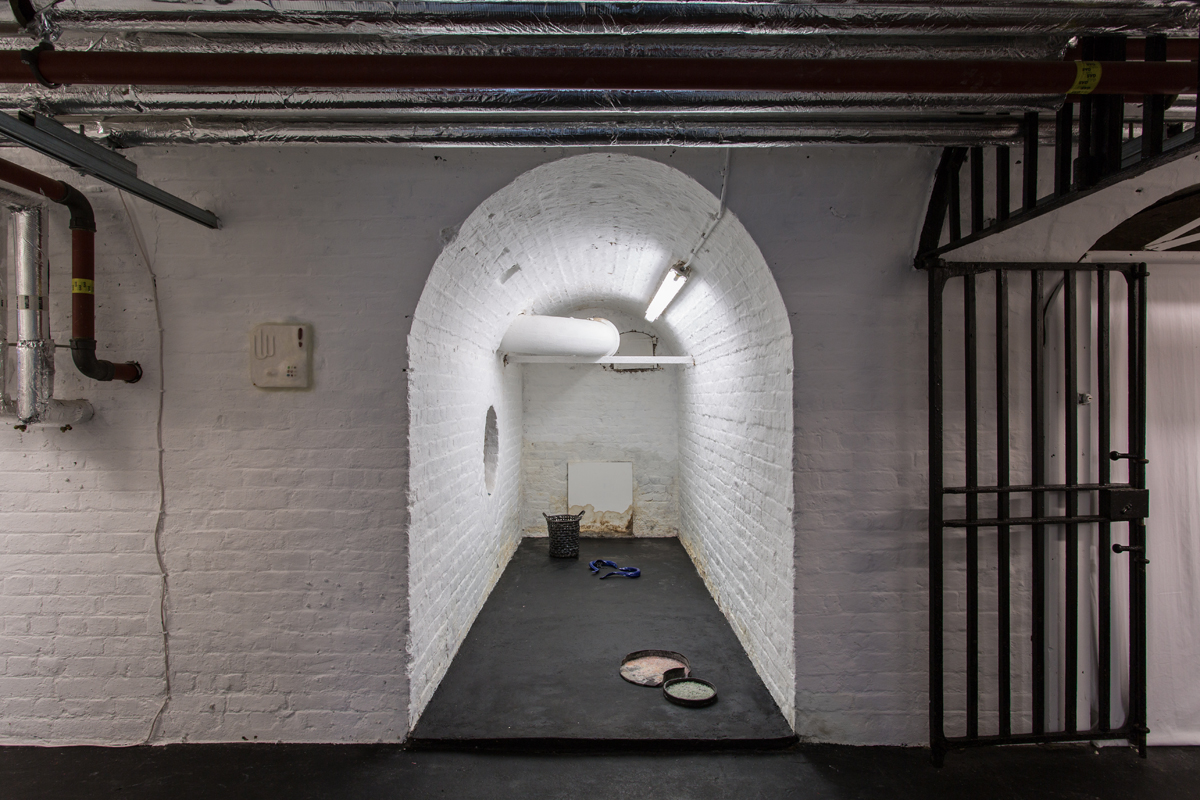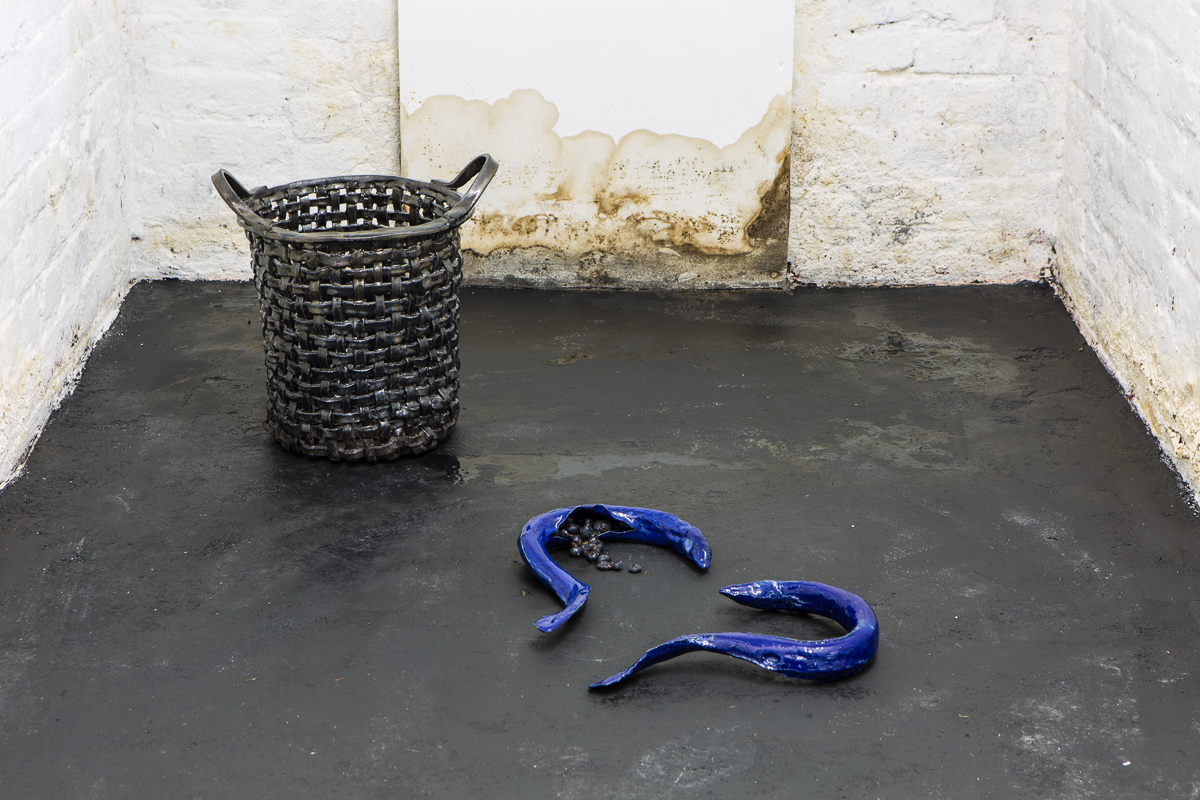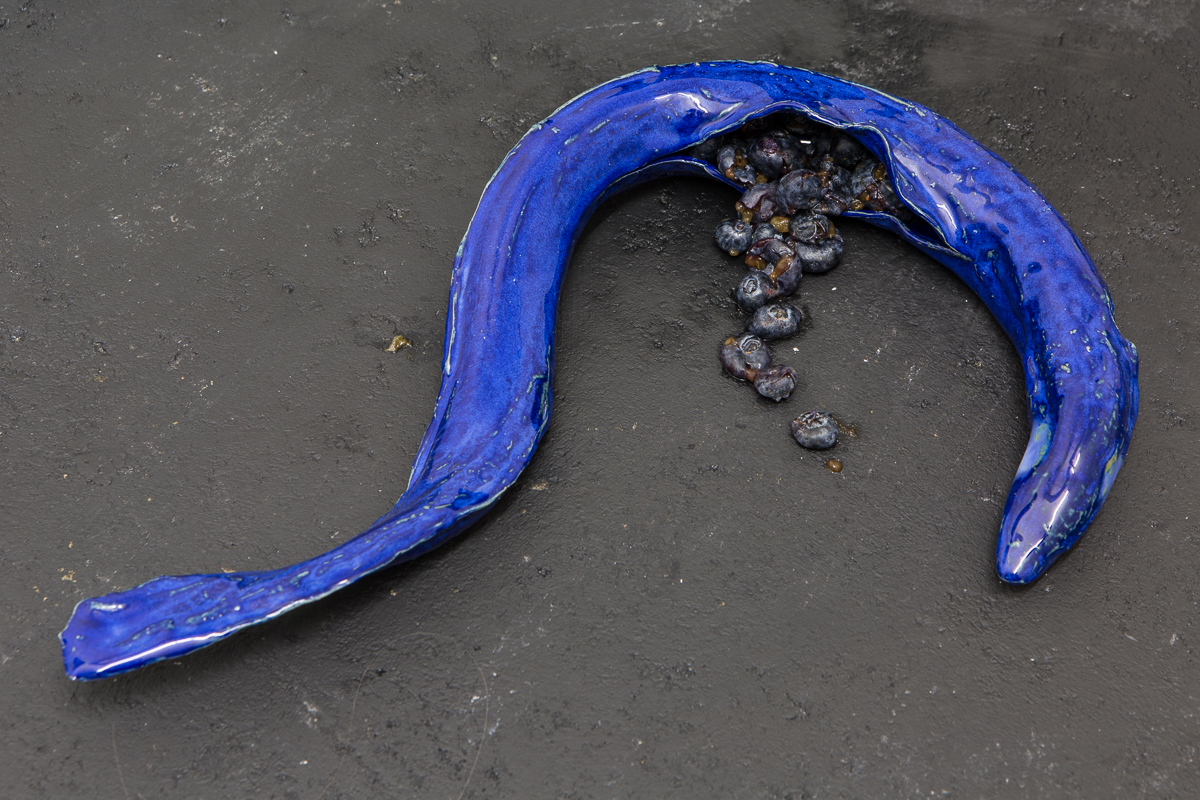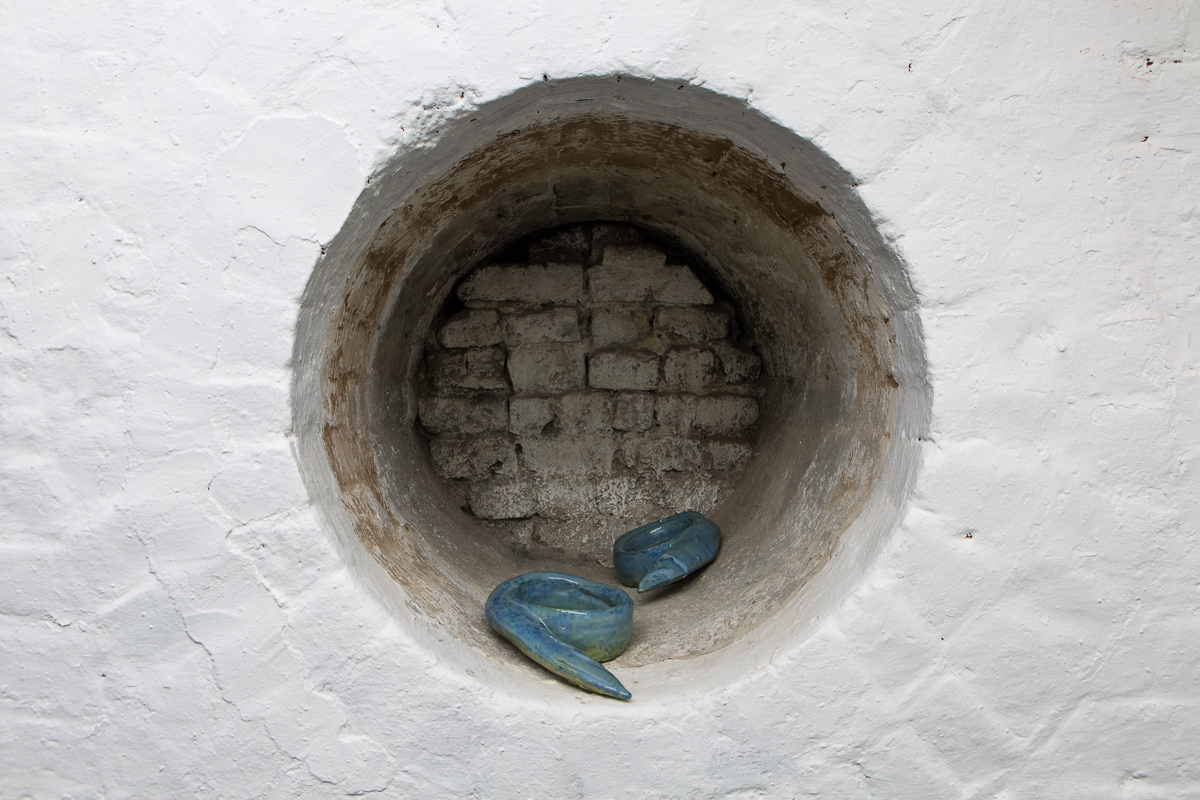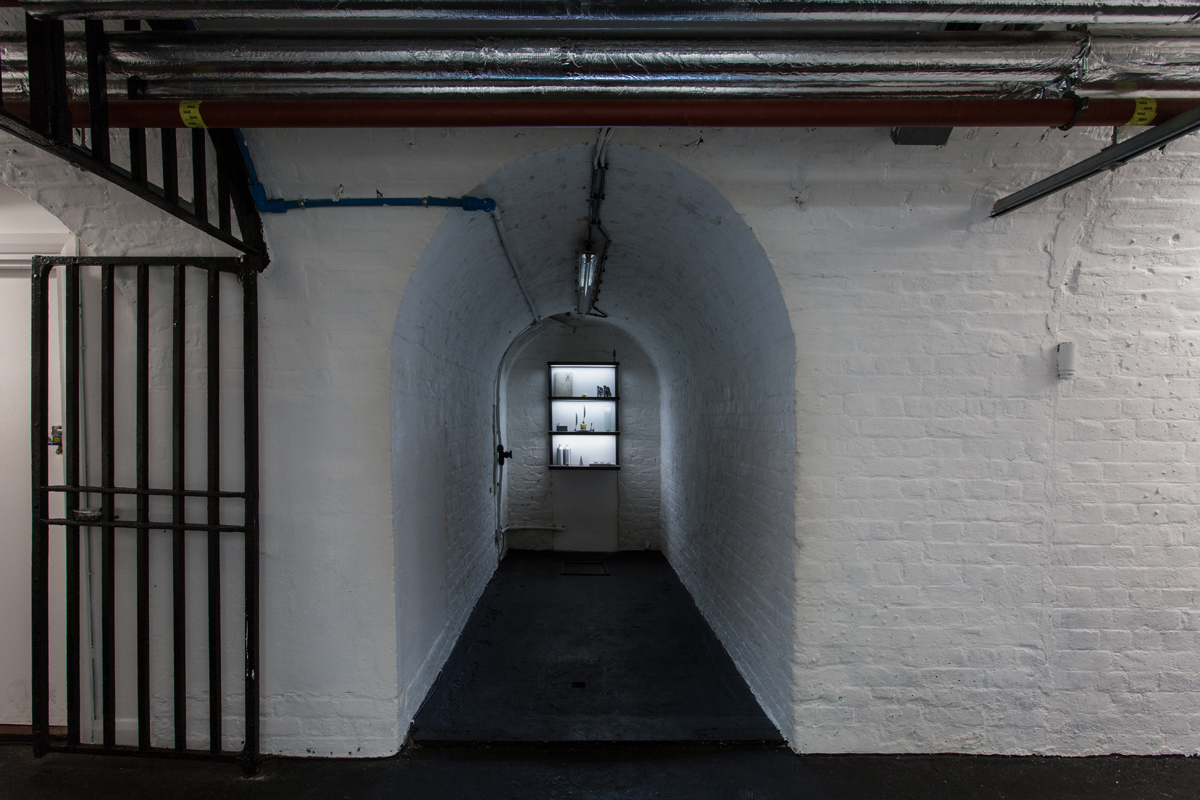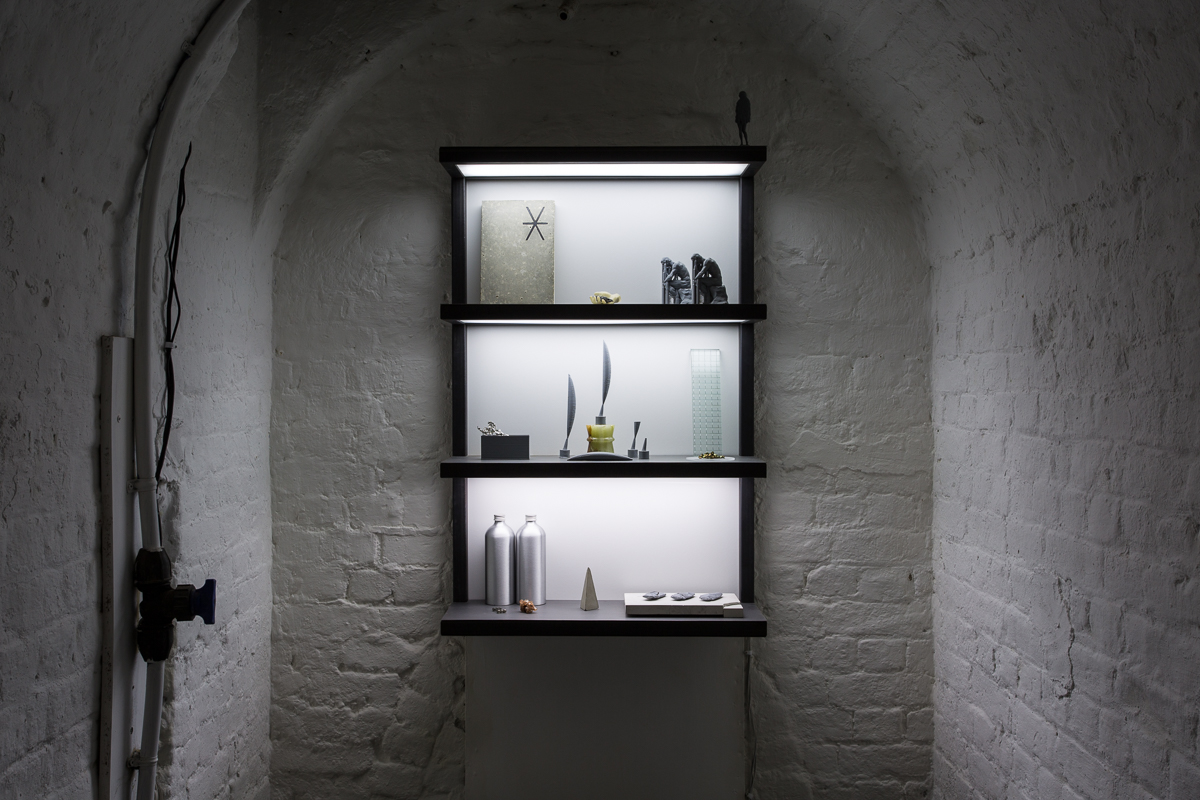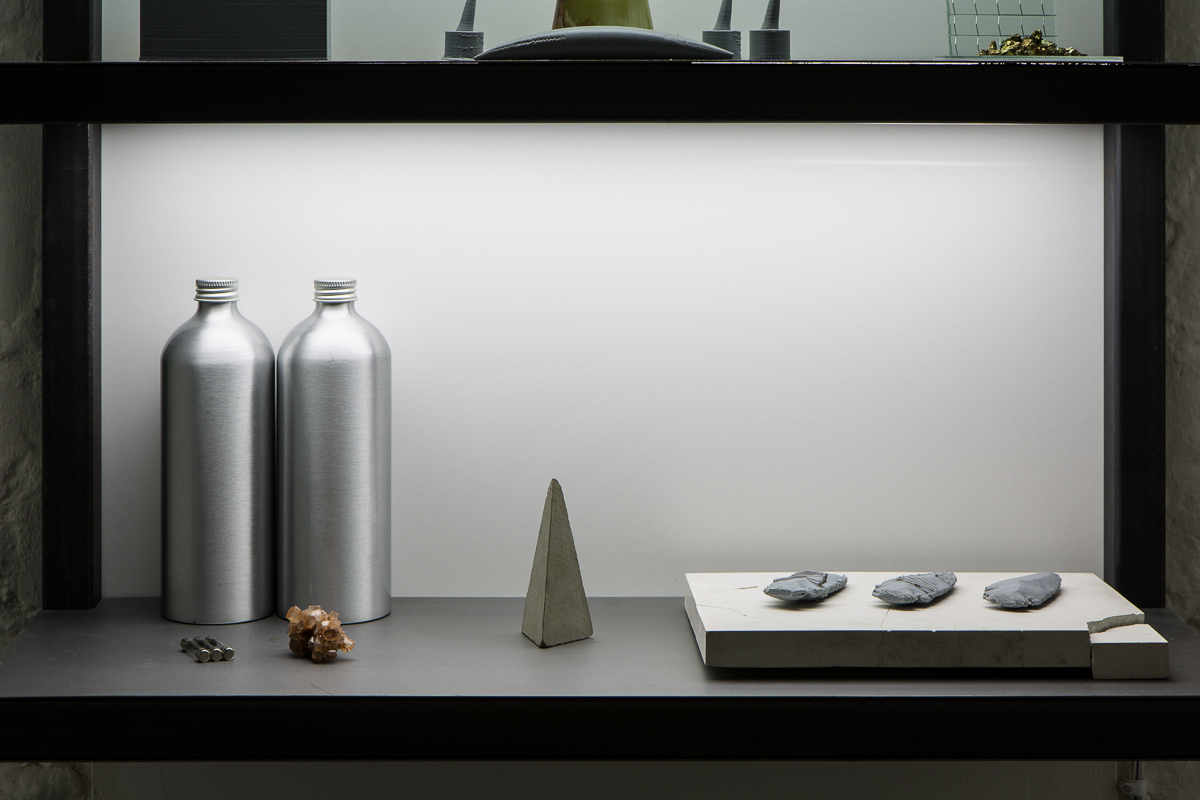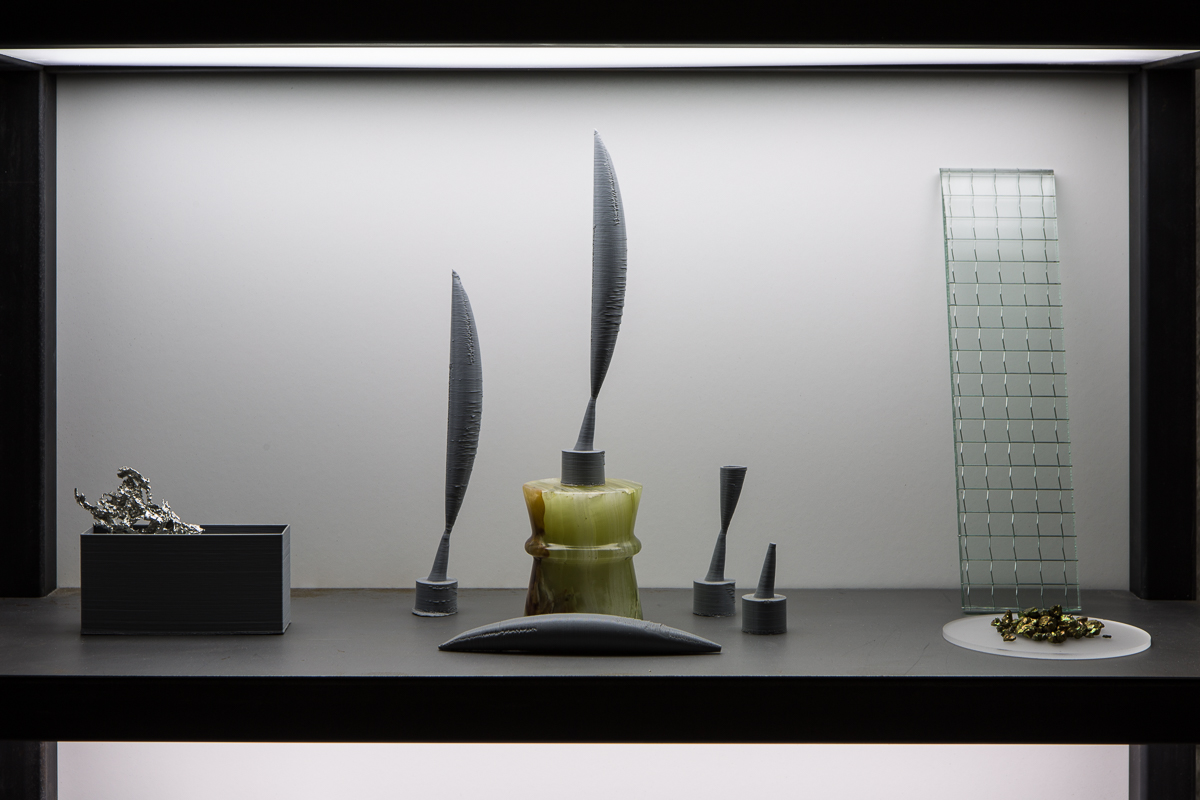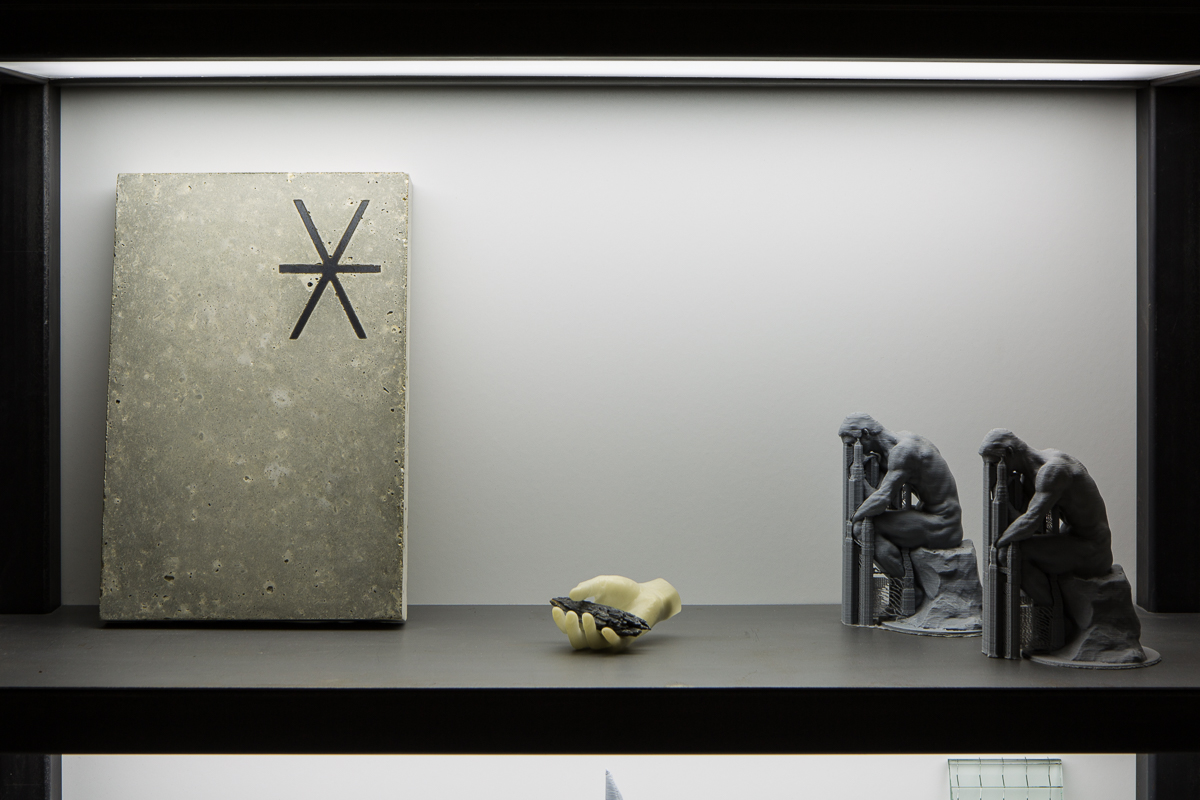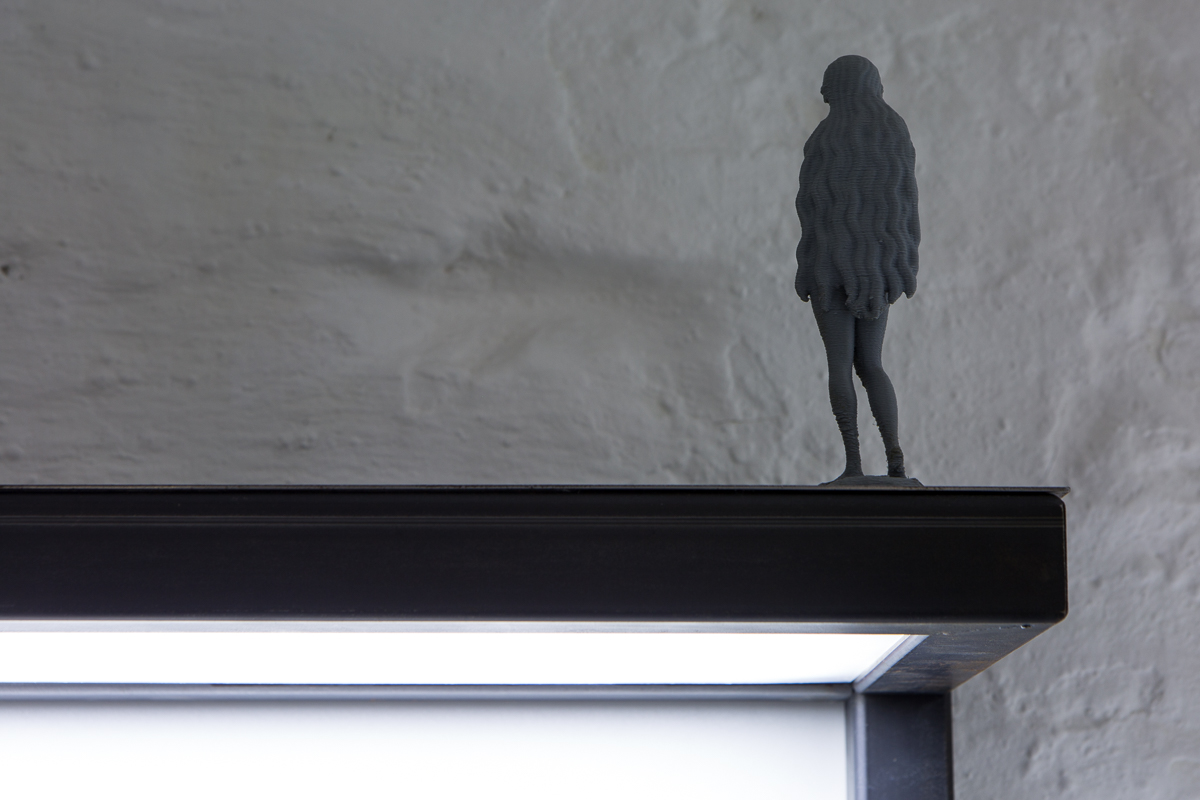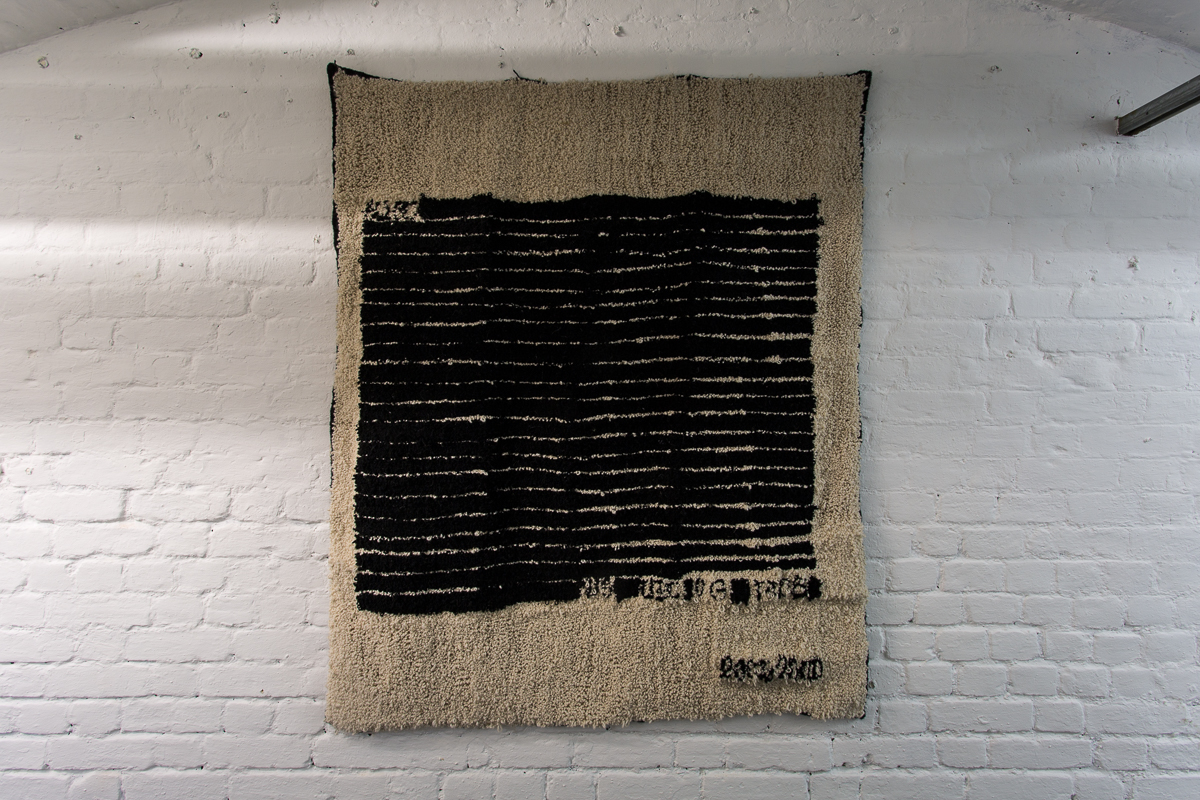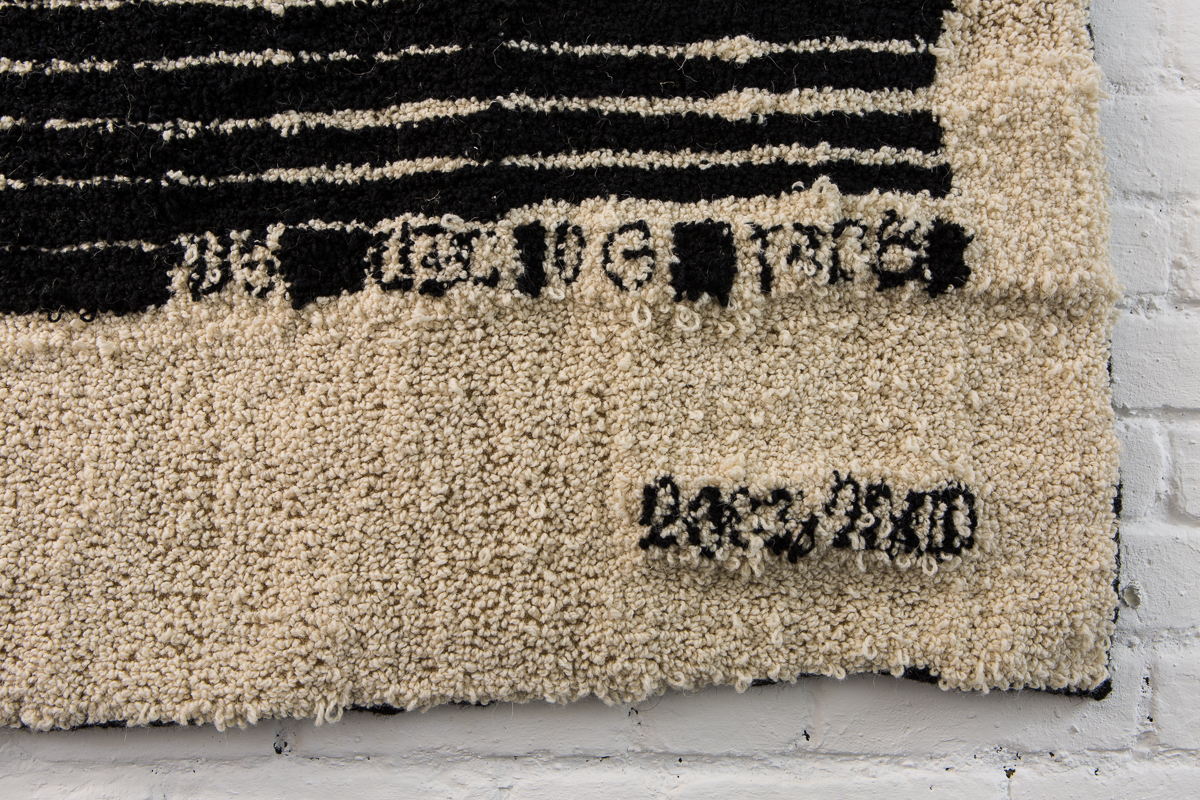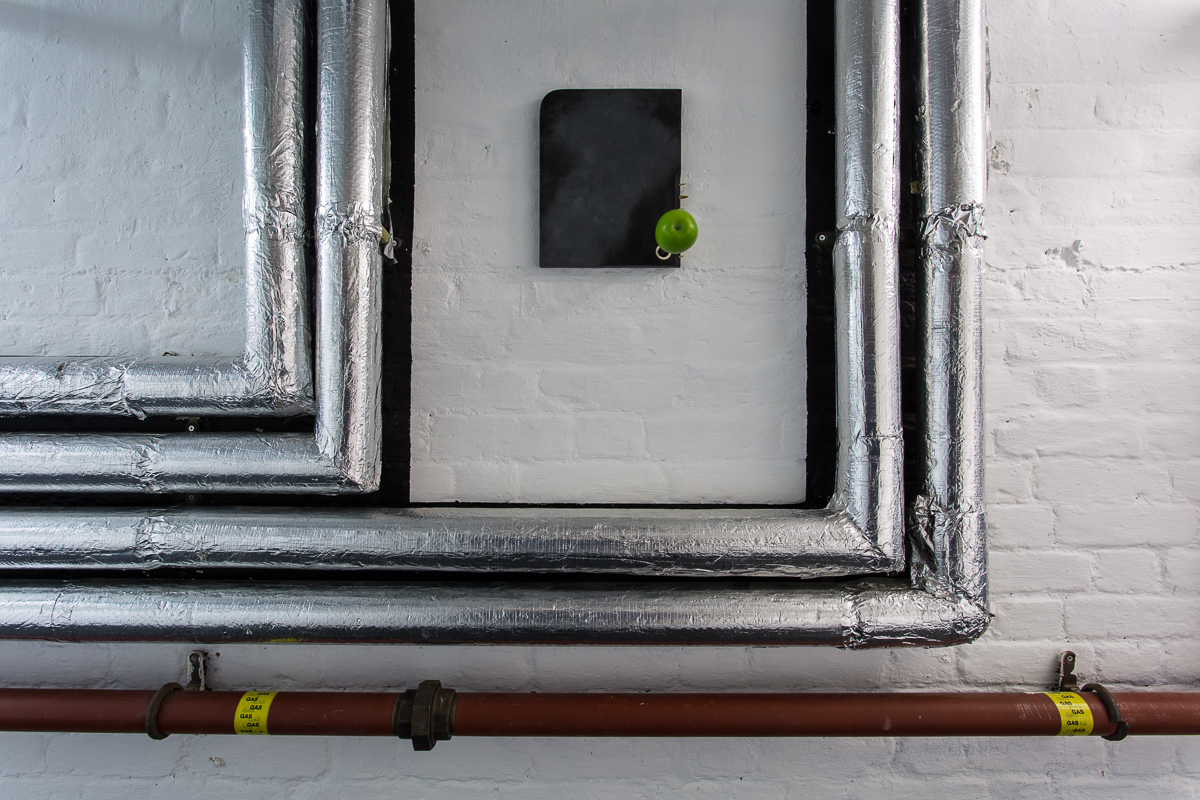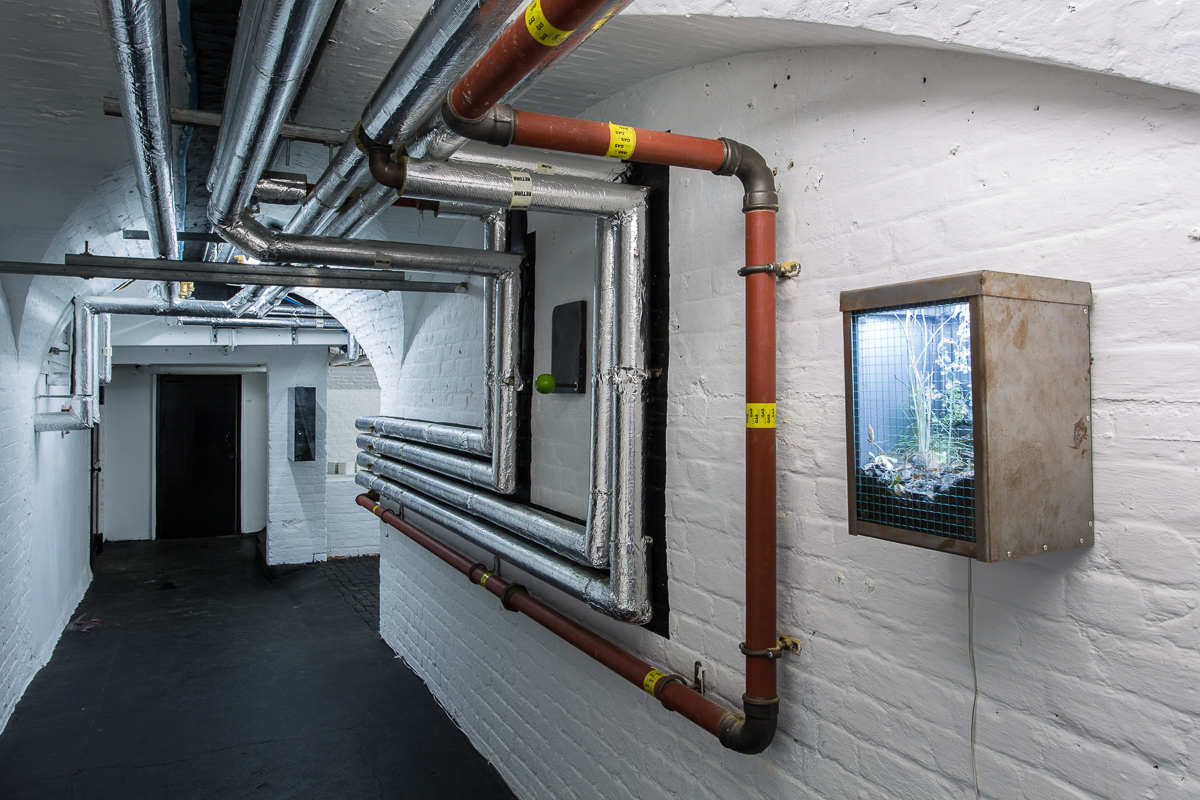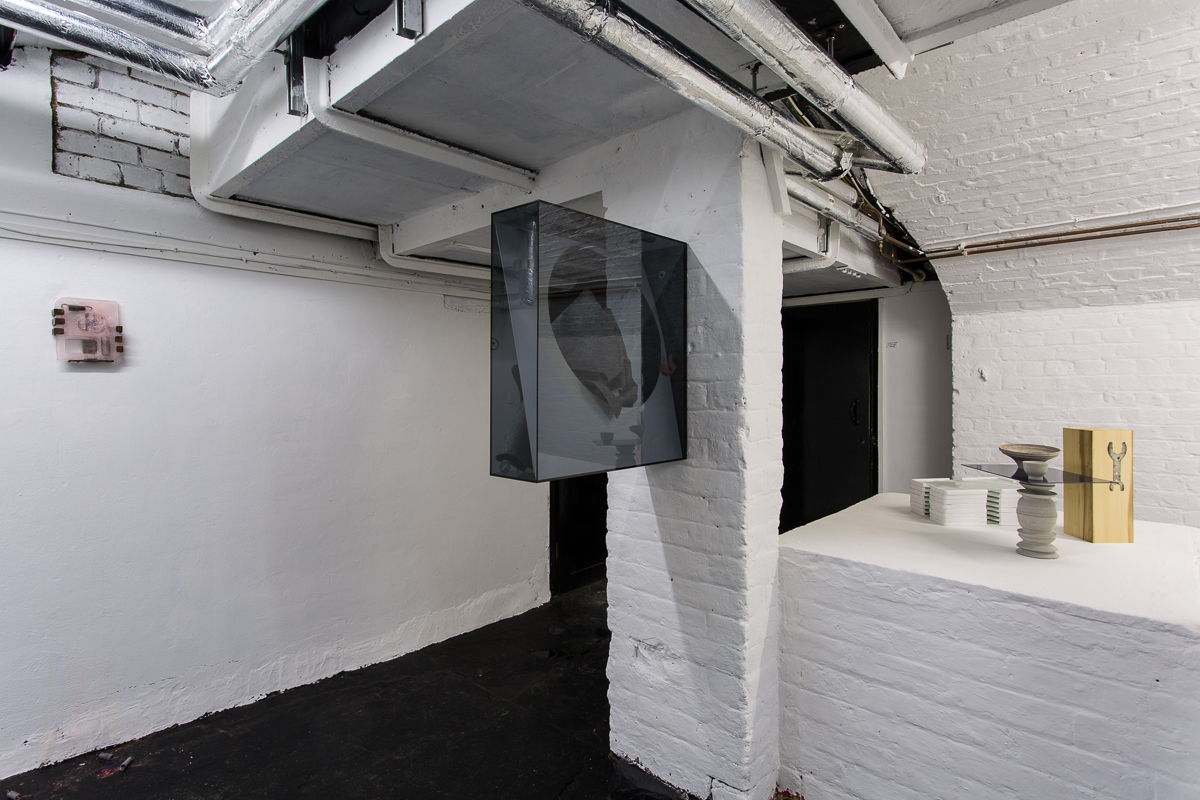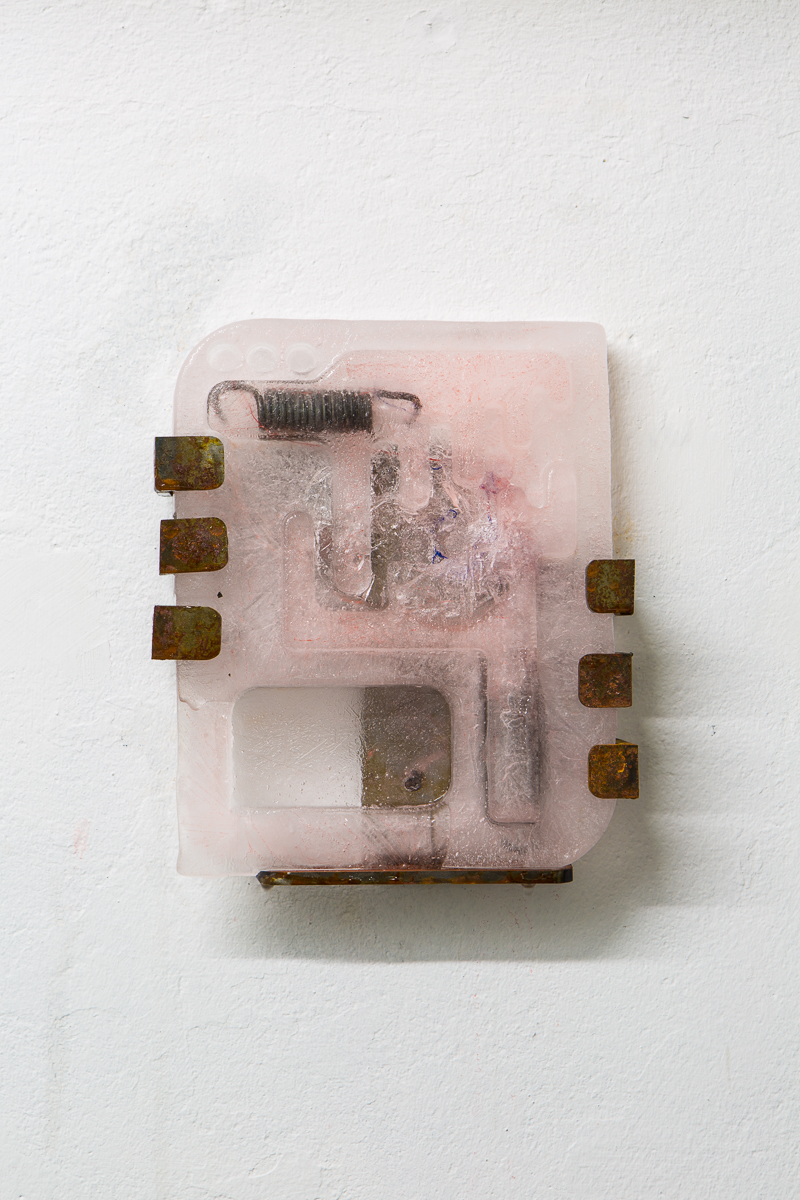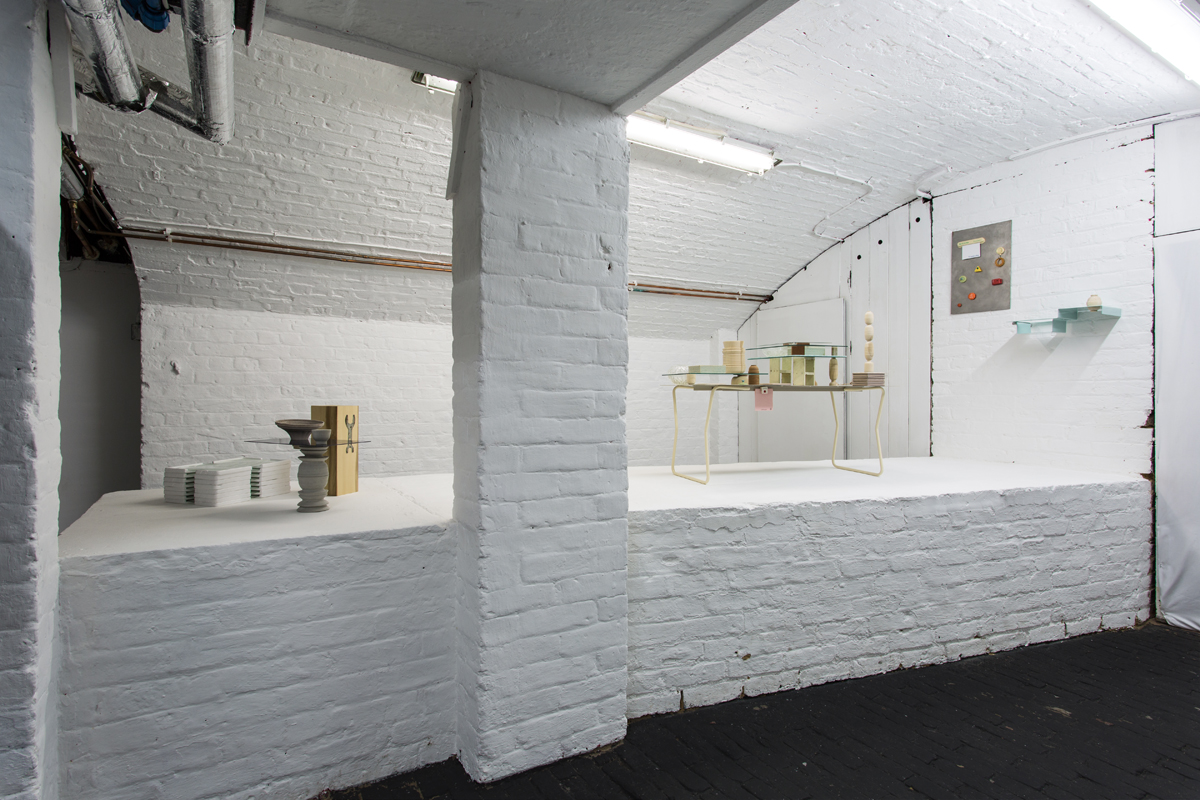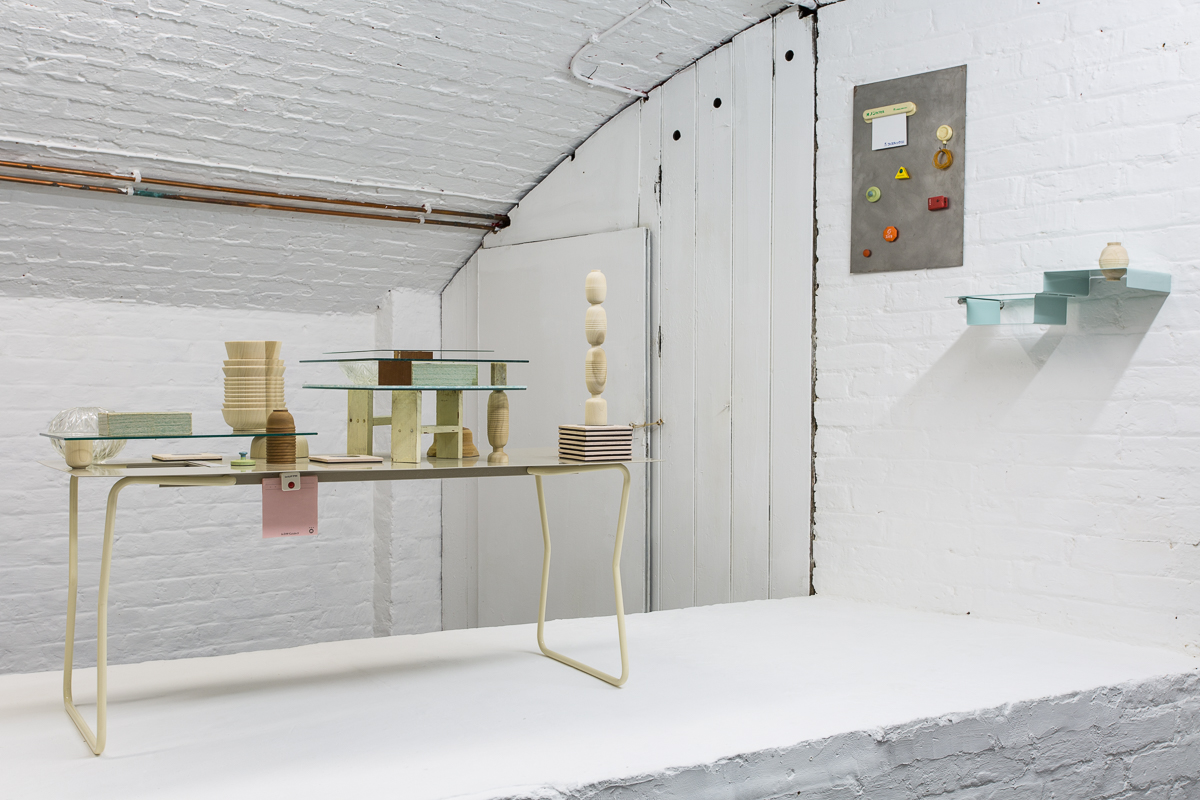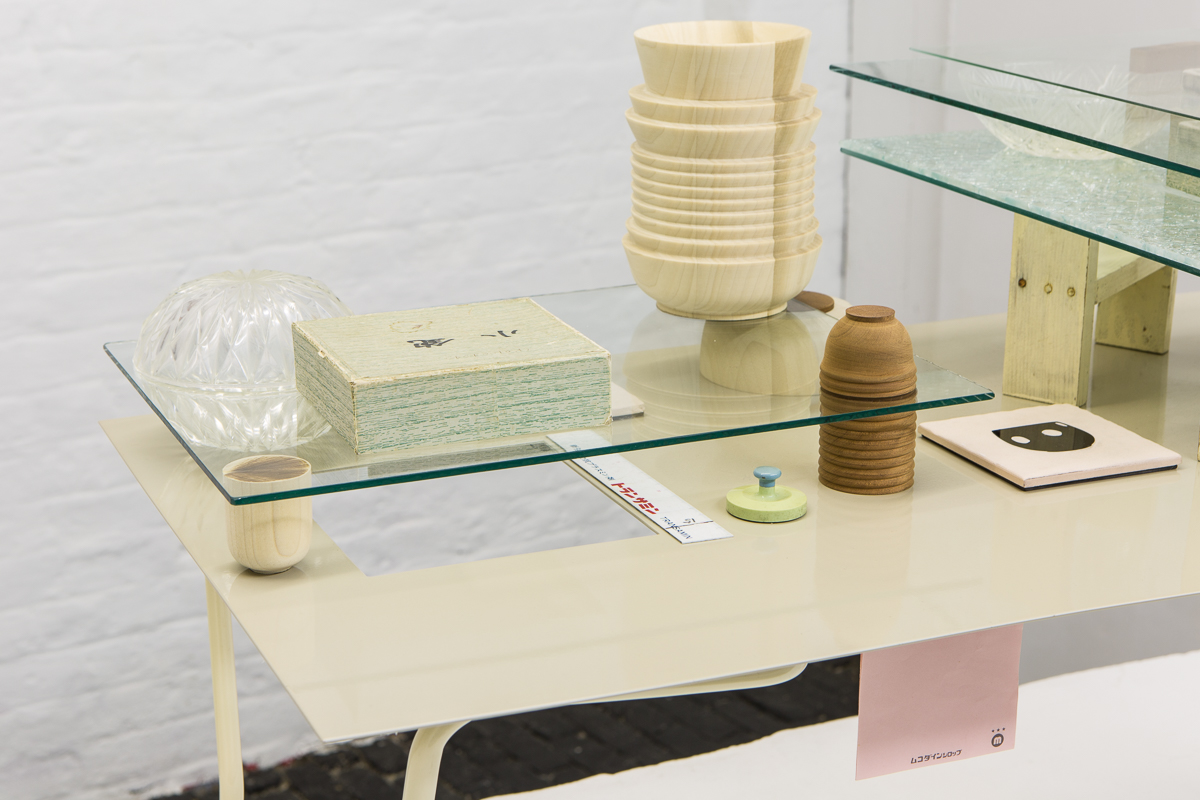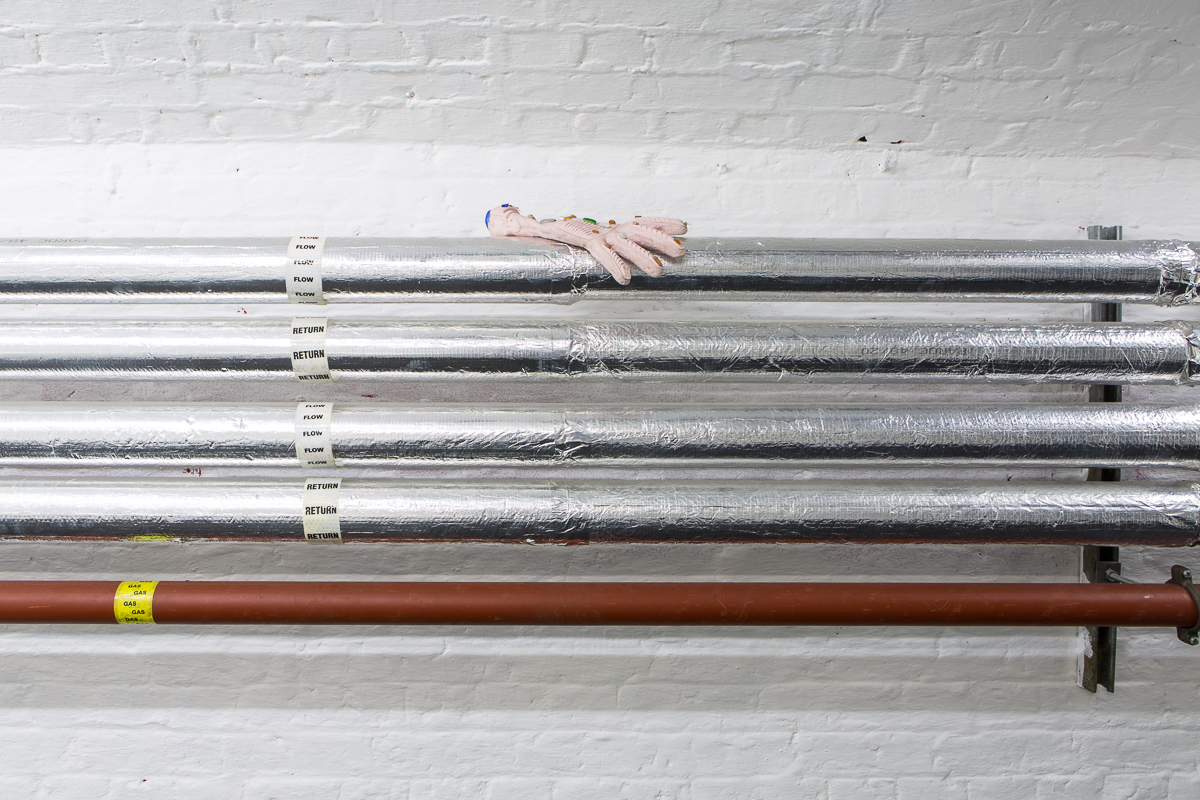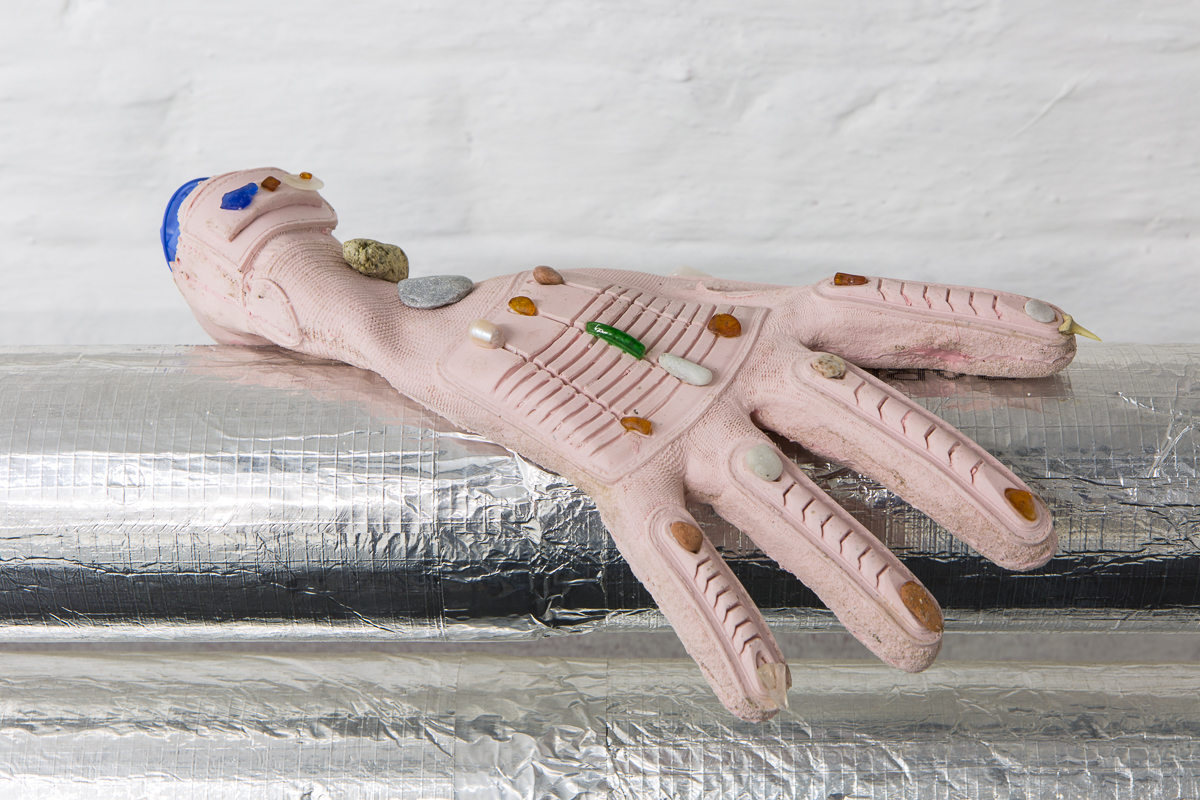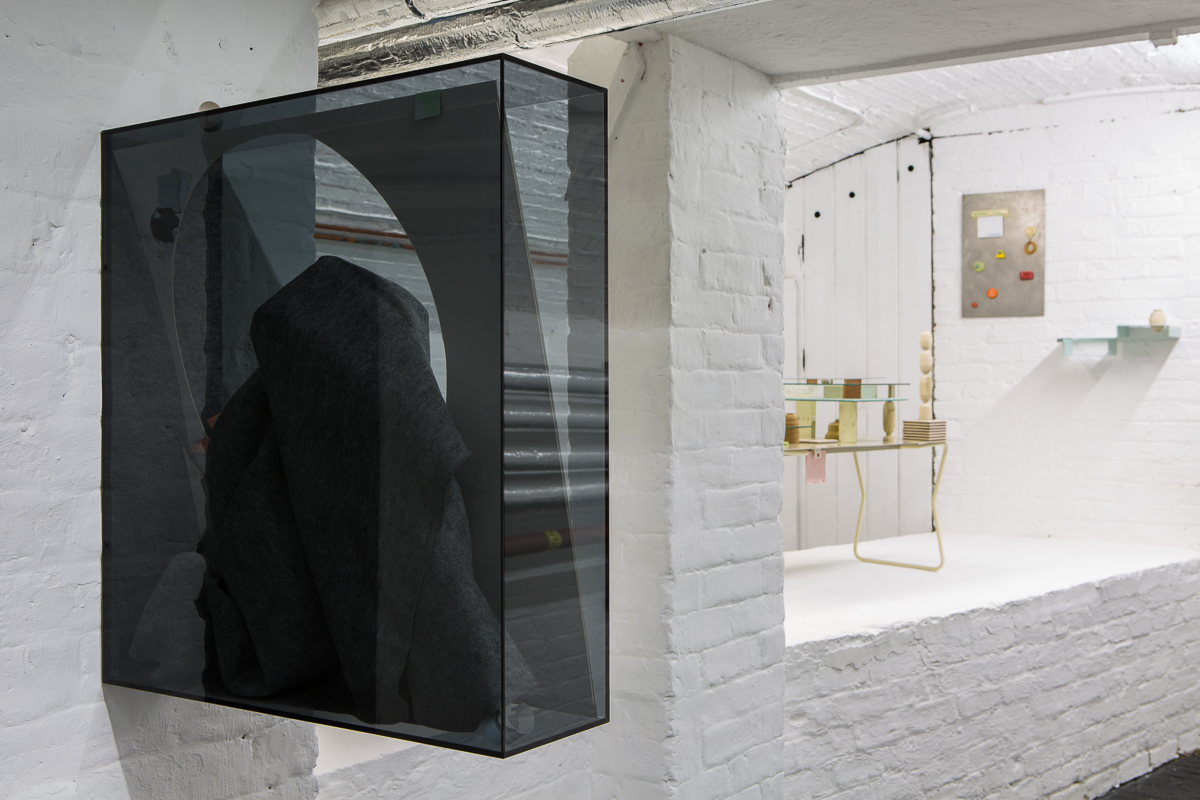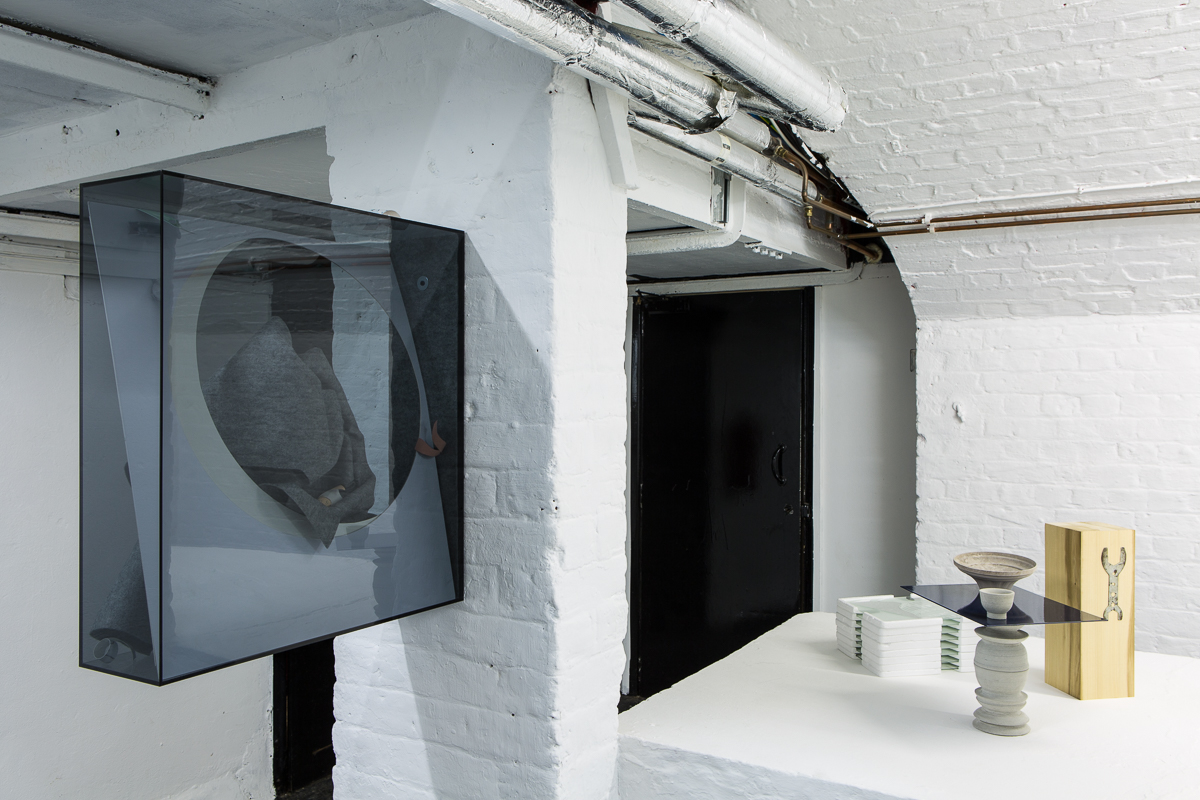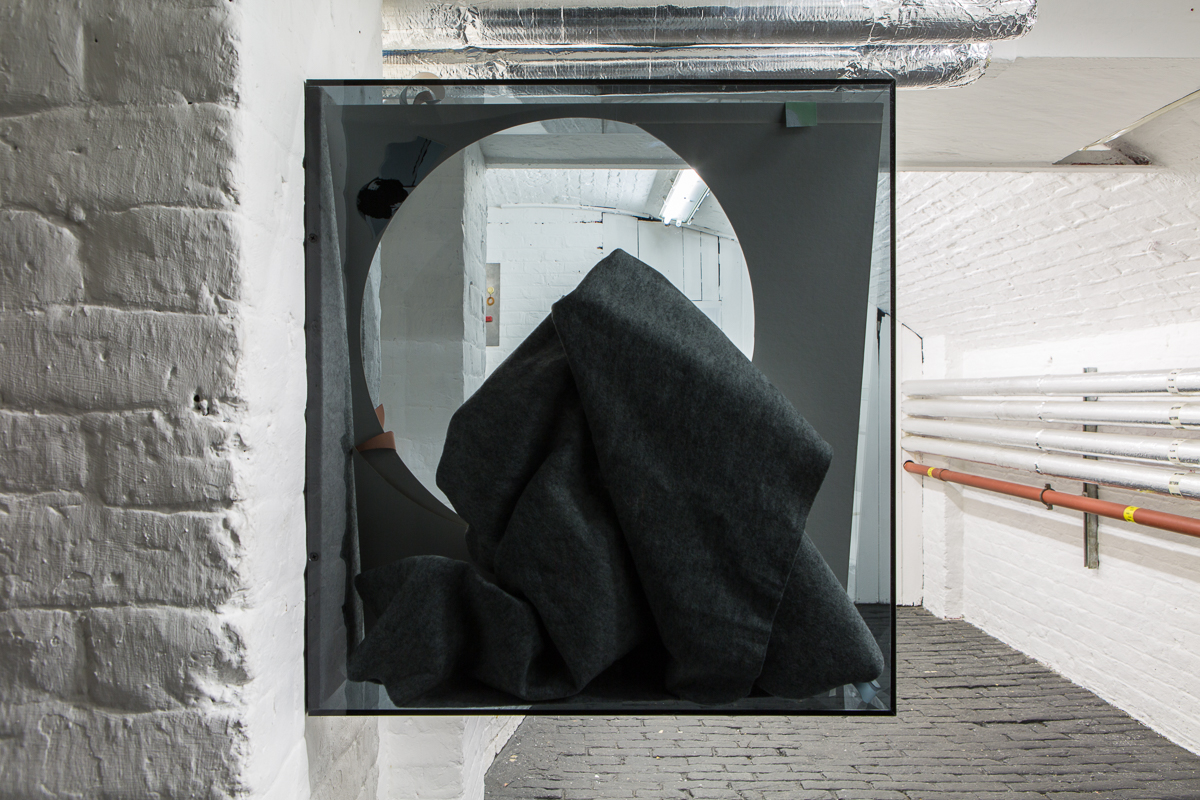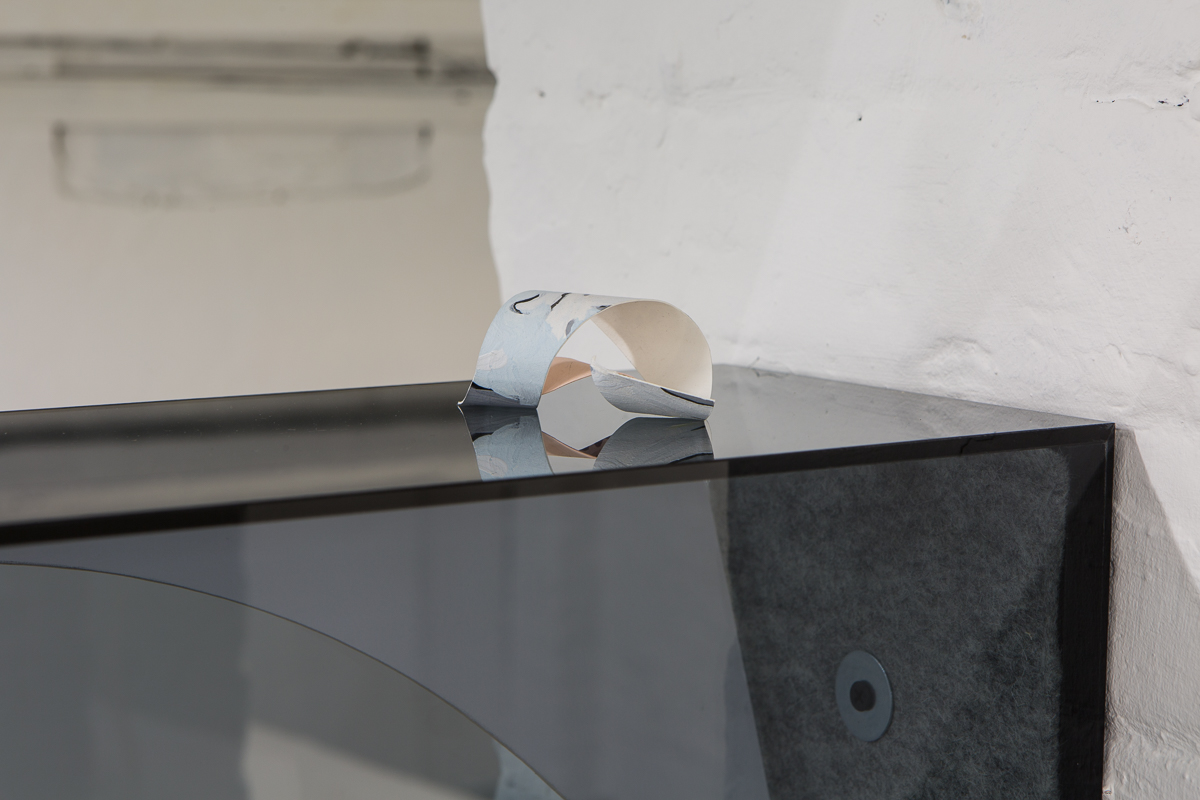To the core
13.10.18 - 10.11.18
Charlie Godet Thomas
Anna Gonzalez Noguchi
Emily Lazerwitz
Paloma Proudfoot
Victor Seaward
Hua Wang
Rafal Zajko
Opening Saturday 13th October from 6.30-8pm
To the core explores notions of storage, retrieval and archive, engaging the specific nature of the White Crypt site. Human time is accessed through objects, artefacts, material cultures that are formed and reformed. They are our “spare parts” that sink ever-deeper towards the earth’s core, if not chosen for freezing in museum’s wunderkammer. Likewise, we are driven to create to externalise time, drawing on a range of technical supports for our melting memory — time capsules, tendrils of text, terraform hard drives… Data speed-tufted into tapestry.
It is that which makes such thing as humanity slightly possible, extending through time, shot with story, stradling generations. A shadowy acrylic box reminisces a long-gone Chinese poet, as neolithic tools are summoned from open-source downloads. And so on and so on it goes, where we might be little more than links falling into one long chain. The present is only batter beat to the ribbon stage, which holds shape for just a moment, between cycles of conservation and decay.
This future fossil will make known the persistence and existence of our “human” culture, in spite of our very own perishability. For without technic, “there can be no memory, no heritage, no adoption, no invention” 1. Though we live in an age of seeming fracture, violent separation and piecemeal dislocation, the rubble is rich as soil is fertile. The ruins testify to the partial quality of both our history and reality, and are at once seeds that can be nurtured for “otherwise” futures.
Bit by bit we might muster them for personal invocation or artistic intervention. A grandfather’s marked ruler measures an arbitrarily cut square, while gem-like detritus from Mykonos is blurred by thick vaseline. Such flecks of history are collected with imaginaries — a coming-together of modular segments, constituted differently in every place. Like open ended questions, they shift from time to time, with earnest ambiguity that speaks to our potential for creative evolution.
1. Gaston, Sean. Introduction. Technics of decision: an interview with Bernard Stiegler. Angelaki, 2003. 8(2), pages.151-168.
Exhibition curated by Anaïs Lerendu and Elaine Tam
images: Rob Harris
